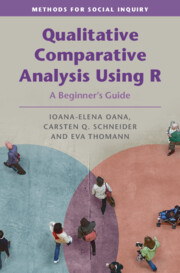References
Published online by Cambridge University Press: 07 October 2021
Summary

- Type
- Chapter
- Information
- Qualitative Comparative Analysis Using RA Beginner's Guide, pp. 224 - 231Publisher: Cambridge University PressPrint publication year: 2021



